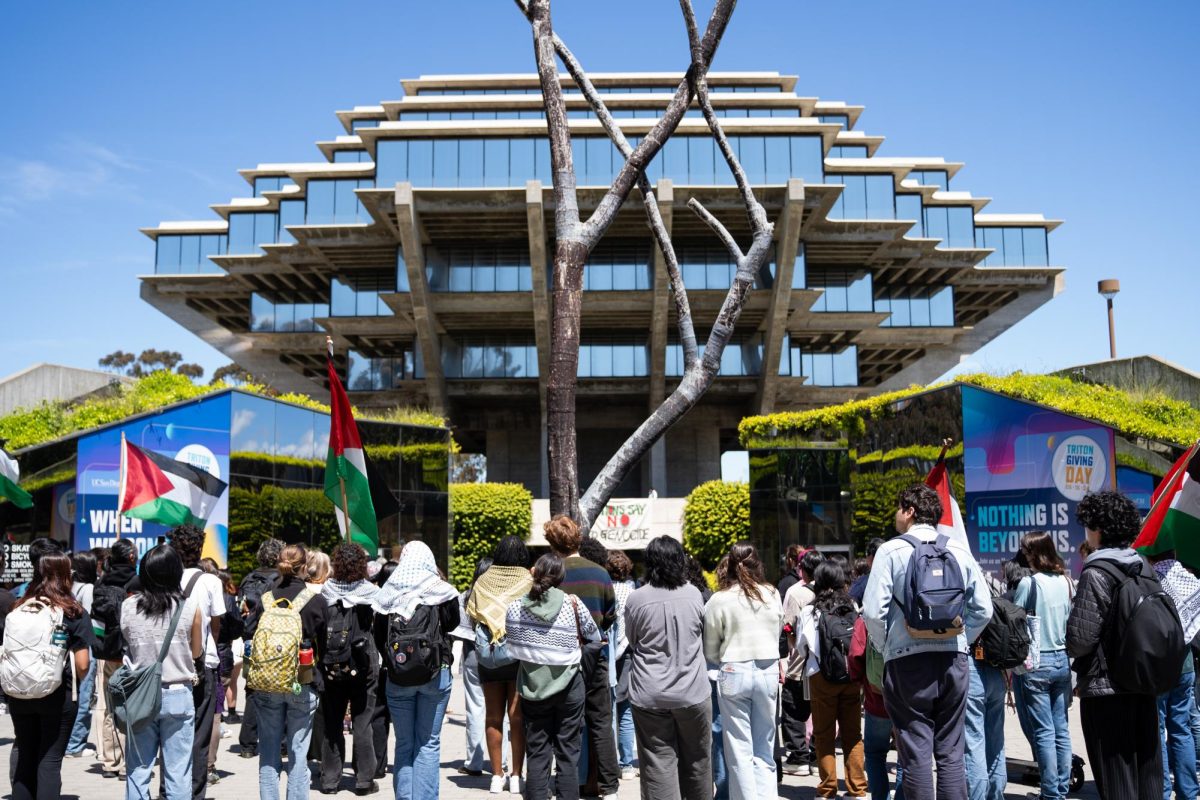The U.S.-China Economic, Security Review Commission and approximately 20 experts on Chinese business and technology convened at Great Hall on Feb. 12 and Feb. 13 for two days of hearings sponsored by UCSD’s Graduate School of International Relations/Pacific Studies.
The hearings consisted of the experts’ views on China’s capabilities in the production and development of high-tech goods and services, particularly in the areas of biotechnology, nanotechnology, telecommunications, energy computing and information technology.
“The goal of our field investigation is to examine closely the changing trade and investment patterns in the East Asian region due to China’s economic growth. Crucial to this issue is China’s emergence as a major player in the production of high-tech goods and services, and its increasing involvement in advanced research and development in many fields,” Commission Chairman Roger W. Robinson, Jr. said in his opening remarks. “Assessing the implications of these developments is at the heart of the Commission’s mandate.”
Established by Congress in 2000, the commission was created to investigate the national security implications of the United States’ trade and economic relationship with China.
The field investigation began with an introduction on “China as an Emerging High-Tech Giant” by Peter Cowhey, dean of IR/PS.
“There is certainly no relationship that is more important to the future of the Pacific than the relationship between the United States and China,” Cowhey said. “Indeed, in the long-haul of the 21st century there may be no single bilateral relationship in the world that is more important.”
Commissioner Robert F. Ellsworth echoed Cowhey’s sentiments on China’s international importance.
“The rise of China, in my view, is the economic and geopolitical event of our age. It is bringing two centuries of global domination by Europe and, subsequently, America to an end,” Ellsworth said. “World-transforming change has begun.”
Following introductory remarks by commission members and Cowhey, the 12-member commission began its series of five intensive discussion panels.
Panel one, focusing on the Chinese economy, sought to examine current trends and future challenges posed by the most populous country in the world.
“Like any economic relationship mediated through the market, the [U.S.-China] relationship has elements of competition and rivalry as well as cooperation,” IR/PS economics professor Barry Naughton said. “However, it is a mistake to view the relationship solely or primarily in terms of rivalry … Rapid Chinese technological development has come in the framework of international production networks that are predominately coordinated by U.S. companies.”
Panel two, focusing on China’s trade and investment with its neighbors, featured the views of three professors, all members of the IR/PS faculty. Panels three and four turned to China’s technological capabilities, particularly in the fields of biotechnology and telecommunications.
“China’s large, increasingly affluent and health-conscious population presents a huge market opportunity for biotechnology-oriented companies in developed countries,” said Greg Lucier, president and chief executive officer of Invitrogen Corporation.
The Commission’s activity closed on day two with a panel titled “China’s role in Asia.” The fifth and final panel featured expert insight into China’s relationships with other prominent Asian powers, particularly Japan, North Korea, South Korea and Taiwan.
Susan Shirk, a professor of political science at IR/PS, spoke about China’s growing interest in multilateral cooperation.
“While the evidence of China’s growing interest in multilateral cooperation with its neighbors is clear, interpreting it is more difficult,” Shirk said. “What motivates the Chinese embrace of Asia-Pacific regional multilateralism? Is it a credible signal of China’s peaceful intentions or a Bismarckian strategy to grow stronger without provoking others to combine against it?”
The commission’s trip to UCSD was its second field investigation outside Washington, D.C. The first was on Jan. 30 to Columbia, S.C., where the impact of trade with China on the U.S. manufacturing base was examined.







